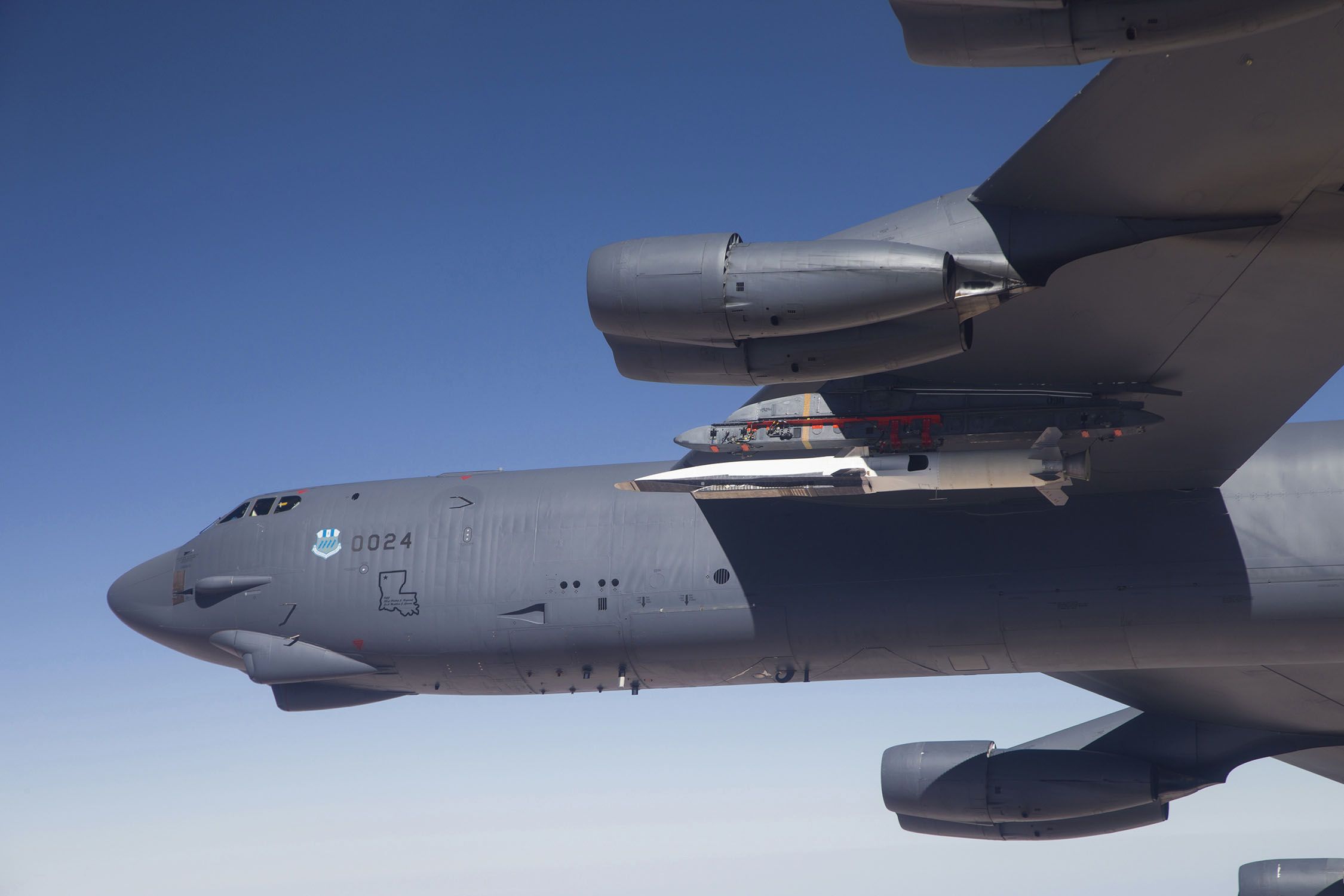
Two American B-52 bombers flew into a contested area in the East China Sea this week, directly challenging a zone Beijing unilaterally set up just days ago in order to, as a Chinese official sees it, "defend our airspace," escalating the already heightened tensions in Asia.
The U.S. planes flew Monday evening over a chain of uninhabitable islands where China and Japan have repeatedly clashed recently, without notifying the Chinese authorities. China earlier set up the area they called an Air Defense Identification Zone (ADIZ), demanding that any aircraft must clear its flight pattern there with Beijing before entering it.
"It's the right of every country to defend its airspace," China's ambassador to the United Nations, Liu Jieyi, told me. Setting up an ADIZ is "a normal arrangement" in international affairs, he added. "Just imagine the reaction if Chinese jets [flew unannounced] over New York or Washington," he said. He insisted that the new Chinese-set zone does not restrict commercial flights.
Nevertheless, Liu cautioned against "making too much" of the flight of the B-52s, which was first reported here by the Wall Street Journal. But while declining to define the American aircraft maneuvering as a "provocation," Liu nevertheless pointed to some of the larger issues underlying the latest incident, including the wide gap between American military abilities and those of China.
"The U.S. is monitoring China constantly, using satellites and ships," he said. "We don't have such technology."
Washington immediately denounced China's announcement over the weekend that it planned to set up a new ADIZ over the contested area. The new move "constitutes an attempt to change the status quo in the East China Sea," said Secretary of State John Kerry. "Escalatory action will only increase tensions in the region and create risks of an incident."
Although American officials have thus far refrained from taking sides in the various territorial disputes in the East China Sea, Washington officials had already made clear America's defense treaty with Japan covers an island chain in the area which China considers to be part of its airspace, but which Tokyo has long administered.
Japan also denounced the provocative nature of the Chinese announcement. "We are determined to defend our country's air and sea space," Prime Minister Shinzo Abe said in the Japanese parliament on Monday. "The measures by the Chinese side have no validity whatsoever for Japan," he said. South Korea and Taiwan, which also claim sovereignty over areas that China now included in its ADIZ, also condemned the move.
The hottest contest is an area known in Japanese as the Senakaku Islands and that China calls Diaoyu. Although uninhabitable, the atoll is rich in minerals, fishery and oil. In recent years, and increasingly in 2013, Chinese military crafts, at times disguised as fishing boats, entered the zone, prompting Japan to dispatch its military craft to warn them off.
The confrontations with China have raised Japanese nationalist sentiments. China, meanwhile, has vastly increased its military expenditure to raise its regional influence to match its burgeoning economic prowess.
Pentagon officials defined the Monday flight of the two Guam-based B-52s as "routine." The unarmed bombers took part in a long-planned military exercise dubbed "Coral Lightning."
No other U.S. planes entered the zone, and the planes returned to their Guam Anderson Air Force base without incident. The Chinese foreign ministry, however, was not notified of the flight in advance, as required by their new ADIZ rules.
Follow Benny Avni on Twitter: @bennyavni
Uncommon Knowledge
Newsweek is committed to challenging conventional wisdom and finding connections in the search for common ground.
Newsweek is committed to challenging conventional wisdom and finding connections in the search for common ground.





